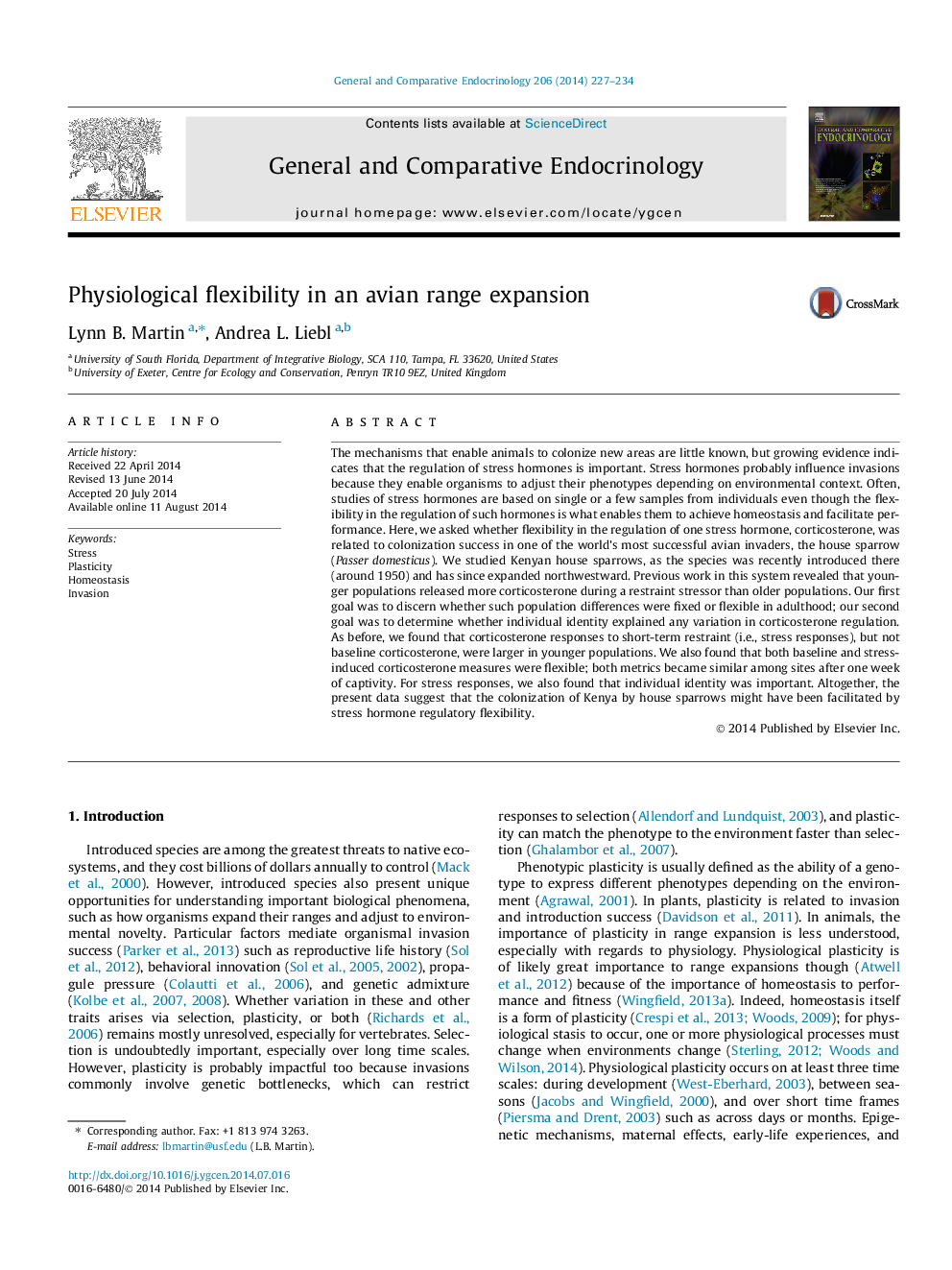| کد مقاله | کد نشریه | سال انتشار | مقاله انگلیسی | نسخه تمام متن |
|---|---|---|---|---|
| 2800113 | 1568899 | 2014 | 8 صفحه PDF | دانلود رایگان |
• House sparrows arrived to Kenya in the 1950’s and have since colonized the country.
• Previously, we found that corticosterone stress responses facilitated this event.
• We find here that spatial patterns in stress responses partly arise via plasticity.
• We also find evidence of individual stress response personalities.
• We find no evidence for constraints on different types of regulatory covariation.
The mechanisms that enable animals to colonize new areas are little known, but growing evidence indicates that the regulation of stress hormones is important. Stress hormones probably influence invasions because they enable organisms to adjust their phenotypes depending on environmental context. Often, studies of stress hormones are based on single or a few samples from individuals even though the flexibility in the regulation of such hormones is what enables them to achieve homeostasis and facilitate performance. Here, we asked whether flexibility in the regulation of one stress hormone, corticosterone, was related to colonization success in one of the world’s most successful avian invaders, the house sparrow (Passer domesticus). We studied Kenyan house sparrows, as the species was recently introduced there (around 1950) and has since expanded northwestward. Previous work in this system revealed that younger populations released more corticosterone during a restraint stressor than older populations. Our first goal was to discern whether such population differences were fixed or flexible in adulthood; our second goal was to determine whether individual identity explained any variation in corticosterone regulation. As before, we found that corticosterone responses to short-term restraint (i.e., stress responses), but not baseline corticosterone, were larger in younger populations. We also found that both baseline and stress-induced corticosterone measures were flexible; both metrics became similar among sites after one week of captivity. For stress responses, we also found that individual identity was important. Altogether, the present data suggest that the colonization of Kenya by house sparrows might have been facilitated by stress hormone regulatory flexibility.
Journal: General and Comparative Endocrinology - Volume 206, 15 September 2014, Pages 227–234
